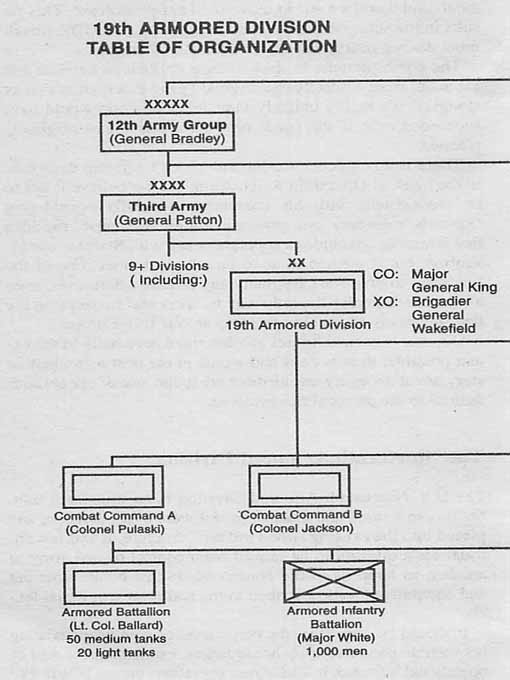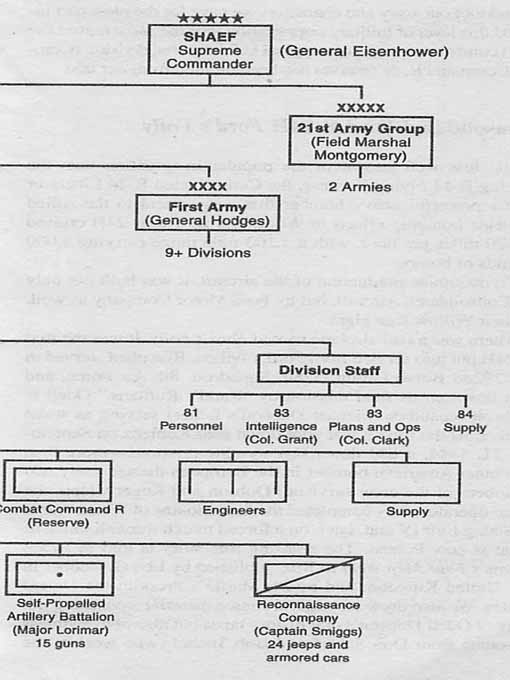Fox On The Rhine (67 page)

The Plot to Kill Hitler
There were several plots to assassinate Adolf Hitler. The final and best known of these was the Bomb Plot.
On July 20, 1944, German conspirators led by Colonel Count Claus Schenk von Stauffenberg carried out what became known as the Bomb Plot against Adolf Hitler. Stauffenberg carried a briefcase containing a bomb into Hitler’s conference room at Wolfschanze, Hitler’s field headquarters. He placed the briefcase on the floor under a massive oak table as close to Hitler as he could get it, then left “to make an urgent call to Berlin.”
Lieutenant General Heusinger was briefing Hitler on the situation on the eastern front. Colonel Brandt, Heusinger’s aide, moved to the table into the spot where Stauffenberg had stood, where his foot brushed against the briefcase. He tried to move the briefcase with his foot, but it fell over on its side. So he reached down and moved the case to the other side of a thick concrete support holding up the table, away from Hitler.
At 12:42 P.M. the bomb exploded. Although several people, including Colonel Brandt, lost their lives in the explosion, Hitler received only superficial wounds.
Believing that Hitler was dead, the conspirators attempted a military coup in Germany, but their own indecision as well as the later information that Hitler had survived, doomed the plot. The Gestapo took a bloody revenge against everyone who was even remotely suspected of being in the plot. Between six hundred and one thousand Germans lost their lives, many under the cruelest tortures.
The name of Field Marshal Erwin Rommel, the Desert Fox, who had been gravely wounded on July 17 when his staff car was machine gunned on a Normandy road by an Allied fighter plane, appeared on a conspirator’s list as a candidate to be president of the Reich. Other conspirators, under torture, denounced Rommel. Rommel denied these charges, and there is no evidence that Rommel was directly implicated in the Bomb Plot. It is possible he was aware of some portions of the conspiracy, but that is far from certain.
Because of Rommel’s military and popular reputation, he was not arrested immediately but was offered instead the chance to commit suicide to avoid arrest. On October 14, 1944, Rommel took poison and died instantly. He was given a state funeral. He never returned to command the German forces on the western front.
All because a foot bumped a briefcase …
On Alternate History
Isaac Asimov, in his seminal time travel novel
The End of Eternity
, articulated the key principle that should govern “alternate history” or “what-if” novels such as this: the concept of the “minimum necessary change” (MNC) that produces the “maximum desired result” (MDR). From seemingly trivial incidents can great transformations occur, as shown in stories from Ward Moore’s classic Bring the Jubilee to the recent Gwyneth Paltrow movie
Sliding Doors
.
The Bomb Plot against Adolf Hitler on July 20, 1944, really happened as described in this book up until the moment when Colonel Brandt attempts to move the bomb-containing briefcase under the table. In reality, Brandt slid the briefcase farther under the table and behind a concrete stanchion, a barrier heavy enough that the blast failed to kill Hitler. Our MNC (minimum necessary change) was to have Brandt stifle a sneeze at that moment, and therefore not to move the fateful briefcase. This results in the successful assassination of Hitler, the MDR (maximum desired result) that drives the rest of this story.
The bomb plotters, in spite of their undoubted heroism and idealism, were evidently the original “gang that couldn’t shoot straight.” It’s highly unlikely their intended coup would have succeeded even if the bomb plot had come off as originally planned.
There is no evidence for Himmler’s countercoup described in the book as Operation Reichsturm, but we believe it not to be inconsistent with his character, especially considering Göring’s weakness as a potential führer. Likewise, the idea that Himmler concludes a separate peace with Stalin is our invention, but it seemed to us to be a logical move, one of the few ways to give Nazi Germany any chance whatsoever, even a slim one, and also the only way to bring real suspense to the final moments of our alternate World War II in Europe.
Our real historical figures are described accurately to the extent possible; their actions and words in the post-assassination story are of necessity invented but are to the best of our abilities faithful to the personalities involved.
The Nineteenth Armored Division
The U.S. Nineteenth Armored Division is an imaginary unit, but it is structured and manned as if it were a real division, and placed into the existing Allied military structure. It was not unusual for a division to be moved from control of one army to another, as happens to the Nineteenth in this book. Manning and equipment levels described in the text represent initial levels.
It should be noted that the corps level of command, existing between division and army headquarters, exerted a great deal of operational influence in U.S. Army operations during WWII. For sake of our story and characters we have for the most part ignored this level of military organization. For the same reason the third combat command of a typical U.S. armored division (Combat Command R, or reserve) has been omitted from our tale.


Consolidated/Ford B-24H
Ford’s Folly
While less well known in the popular imagination than the Boeing B-17 Flying Fortress, the Consolidated B-24 Liberator was a powerful heavy bomber that was critical to the Allied strategic bombing efforts in World War D. The B-24H cruised at 290 miles per hour, with a 2,100-mile range carrying 5,000 pounds of bombs.
To maximize production of the aircraft, it was built not only by Consolidated Aircraft, but by Ford Motor Company as well, in their Willow Run plant.
There was a real airplane named
Ford’s Folly
. It was the first B-24H put into service from Ford’s Willow Run plant, served in the 392nd Bomb Group, 578th Squadron, 8th Air Force, and was flown on its final mission by “Rudd’s Ruffians,” Odell F. Dobson (coauthor Michael Dobson’s father) serving as waist gunner. At the time it was shot down near Koblenz on September 11, 1944, it had flown seventy-nine missions--more than any other American bomber in the European theater. Only two members of the crew survived: Dobson and Roger Clapp, the radio operator; they completed the final months of World War II at Stalag Luft IV and, later, on a forced march through much of what is now Poland. The amazing true story is told in Bruce Lewis’s
Four Men Went to War
, published by Leo G. Cooper in the United Kingdom and by St. Martin’s Press in the United States. We also drew on original source material, consisting not only of Odell Dobson’s oral history tapes but also of eyewitness accounts from Don Scharf and Bob Tuchel (who were in the plane directly behind
Ford’s Folly
when it was shot down) for real information on the final moments of a doomed airplane.
Messerschmitt Me-262 Jet Fighter
The Messerschmitt Me-262 was an amazing technological achievement. The world’s first operational turbojet fighter, the most technologically advanced fighter interceptor of the war--the superlatives go on for this amazing airplane.
In spite of its technological prowess, the Me-262 had little impact on the conduct of the war. First, and possibly most telling, Adolf Hitler wanted the plane developed as a “blitz bomber” rather than as a fighter interceptor. Second, the perennial fuel shortages made it nearly impossible to build and fly the airplane in quantity. Although more than 1,400 Me-262s were manufactured, no more than 300 ever saw combat, and according to General Adolf Galland himself, no more than 50 or 60 were ever operational at the same time.
It was Galland’s opinion that if the Me-262 had become operational even eighteen months earlier, the course of the air war in Europe would have changed. He writes, “I am of the opinion that with only three hundred Messerschmitt Me-262 jet fighters we could have on any day shot down a minimum of two hundred bombers. If this would have continued for a week or two, then the day bombing would have had to be stopped.”
Success has many fathers, and failure is an orphan. In this book, those elements that are successful have many fathers, and any failures or mistakes are the sole responsibility of the authors.
Many people provided advice, counsel, support, and hard work on our behalf in the creation of this book. First, we thank our editor, Brian Thomsen, for his tireless work and advocacy in getting this manuscript accepted as well as whipped into shape, and our agent, Elizabeth Pomada, not only for business support but for advice and counsel in every aspect of the project. Jim Mintz, Tor’s project editor for this book, provided exemplary leadership. Copyeditor Juli Barbato’s eagle eye was invaluable.
Special thanks to Barbara K. Dobson for her work in drawing together all the information about the real Ford’s Folly and for transcribing Odell Dobson’s wartime oral history tapes. Patrick Dobson, Donald Niles Sr., Don Perrin, and Kevin Rose provided extensive technical support on the details of military operations. The amazing Frank Chadwick sent us a very detailed critique of the book and caught many of our technical errors; those that remain are through no fault of his. Edward R. Smith created the background and original character of Reid Sanger for an unpublished juvenile novel. Allison Niles prepared the maps.
Many readers, advisers, and helpers critiqued and supported us in so many ways, from technical advice to literary criticism, from research support to advocacy, from key information to material loans, including (in alphabetical order): Rosemary Althoff, John Ardington, Fred Baxter, Walter J. Boyne, Tim Brown, Charles Clancy, Troy Denning, Odell F. Dobson, Samuel Freeman, Scott Gemberling, Rosina Harter, Mickey Johnson, Hal King, Rob King, Michael Larsen, Chuck Leffier, Brian Librandi, Walter Mason, Joel Mumma, Warren Phinney, Charlotte Porter, Janet Rasmussen, Jim Runtz, Mary Seghers, Patrick Seghers, Jim Singer, Phyllis Singer, Lester Smith, Robert Van Der Linden, and Steve Winter. If we’ve forgotten anyone, we most sincerely apologize.
Our manuscript reviewers were drawn from numerous sources, including our “Fox on the Rhine” seminar at the 1998 GENCON® Game Fair;
the Alliterates literary society
--of which Doug Niles is by far the most handsome member; members of Usenet discussion groups on alternate history and World War II; as well as friends, colleagues, and coworkers who volunteered their time, help, and moral support.
And, of course, we thank our families, especially our wives, Christine Niles and Deborah Dobson, for their patience, love, and support throughout this project.
Visit
Michael’s website
for additional information, bibliographic citations, comments, game scenarios for Douglas Niles’s SPI/TSR boardgames ONSLAUGHT: D-DAY TO THE RHINE™ and WORLD WAR II: EUROPEAN THEATER OF OPERATIONS™, as well as the original transcribed oral history of Odell Dobson’s last flight aboard
Ford’s Folly
and subsequent experiences in a German POW camp.
--Douglas Niles and Michael Dobson, July 1999